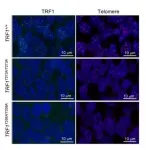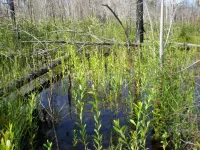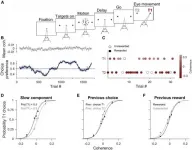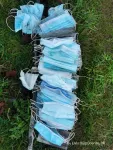Who maintains discipline in a live cell: Physics perspective
Scholars explain the kinetics of distillation in eukaryotic cells
2021-03-10
(Press-News.org) Italian and Russian researchers confirmed the hypothesis that the self-maintaining order in eukaryotic cells (cells with nuclei) is a result of two spontaneous mechanisms' collaboration. Similar molecules gather into 'drops' on the membrane and then leave it as tiny vesicles enriched by the collected molecules. The paper with the research results was published in the journal Physical Review Letters.
The research was carried out by an international interdisciplinary team of biologists (from Polytechnic University of Turin, Italian Institute for Genomic Medicine of the University of Turin and Candiolo Cancer Institute) and physicists (from Landau Institute for Theoretical Physics and HSE University Faculty of Physics).
'Participation of physics theoreticians in biological studies can be rather important, when in the investigated phenomena, we can detect a universal structure, which is poorly sensitive to chemical and other detail,' believes HSE Professor Igor Kolokolov, Director of the Landau Institute for Theoretical Physics (RAS) and Head of the HSE Department for Theoretical Physics. 'Of course, the biology problem setting is primary, and without our colleagues, biologists, there would be no such study. But generally speaking, such collaboration of biologists, oncologists and physics theoreticians comprises a modern swiftly developing scientific area - physical biology.'
A eukaryotic cell has a nucleus and is the main structural unit of all animals and plants. With a microscope, one can see that it is a complicated structure consisting of many compartments divided by membranes. Each compartment plays its role in cell functioning and is occupied by certain molecules. The cell preserves this internal order when it interacts with the environment, and, if no pathologies interfere, it does not degrade to a shapeless gathering of molecules. An important role in a eukaryotic cell's sustainability is played by the process of spatial re-ordering and molecule delivery to correct destinations.
'This process is reminiscent of a daily cleaning in a big and crowded house. But this house doesn't have an obvious housekeeper, and it looks like this important work happens by itself, with unclear rules,' commented Vladimir Lebedev, Professor at the HSE Joint Department for Theoretical Physics with the Landau Institute for Theoretical Physics.
In their paper Optimality in Self-Organized Molecular Sorting, the researchers proposed, analysed and experimentally tested the hypothesis that such self-maintaining order in eukaryotic cells is a result of joint action of two spontaneous mechanisms. First, similar molecules aggregate on the membrane into clusters, similarly to water drops that aggregate in a subcooled cloud and make up a fog. Second, these 'drops' induce a local membrane curvature, and, in the end, form tiny vesicles. Enriched with the gathered molecules, these vesicles detach from the membrane and start they journey in the cell. That's why many internal membranes of a eukaryotic cell are natural distillers, with ready-made production delivered to the end consumer (in another cell compartment) in a 'bottle'.
The published paper suggests a mathematical apparatus that allows universal features in the kinetics of such distillation to be detected. Its adequacy has been tested by direct quantitative modelling. The researchers discovered that for each sort of molecules, there are optimal indicators of parameters, such as cluster appearance frequency, with which the whole distillation process is maximally effective. In particular, if the frequency is too low, distillation is too slow. If it is too high, many small drops quickly evolve and cover a considerable area on the membrane, but none of them reaches the critical size within reasonable time, which is needed to form a vesicle.
'In terms of physics, molecule movement on the membrane follows the laws of diffusion (chaotic, irreversible movement) and the structure of these molecules and the membrane determine only one parameter - the coefficient of this diffusion. The laws of diffusion mean that on a 2D surface, which is a membrane, the probability of molecule arriving in the determined area poorly depends on the size of this area. It is a key thing, which looks to be the main reason that many vital cell processes take place on internal membranes, which are two-dimensional, and intermembrane volume serves mostly as a warehouse for the mix of necessary substances,' said Prof. Kolokolov.
The paper also includes the results of experimental observation of distillation processes in cells taken from blood vessels in human umbilical tissue. The experimental data confirm the theoretical construction, including such an important feature as distribution of growing enriched clusters by size.
'Our paper uses the nucleus growth law, which can be illustrated as follows: if in a boiling pot you see a centimetre-sized bubble, that means that a split second ago, it still existed but was the size of a millimetre, it was not born centimetre-sized,' explained Igor Kolokolov. 'These concepts, brilliantly used decades ago by Ilya Lifshitz and Vitaly Slezov in the kinetics of first?order phase transitions, turned out to be very useful in our research, too.'
The paper allows us to conclude that in evolutionary terms, live cells 'work' with optimal parameters that provide maximum efficiency in the process of molecular reorganization.
The study results are interesting for medical applications, since the defects in the process of molecular re-ordering are related to many serious diseases, including cancer. Creating a universal and clear description that helps determine the parameters of this process management is an important first step, which is essential for the search of treatment opportunities.
INFORMATION:
[Attachments] See images for this press release:
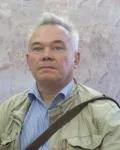
ELSE PRESS RELEASES FROM THIS DATE:
2021-03-10
Variant B.1.1.7 of COVID-19 associated with a significantly higher mortality rate, research shows
The highly infectious variant of COVID-19 discovered in Kent, which swept across the UK last year before spreading worldwide, is between 30 and 100 per cent more deadly than previous strains, new analysis has shown.
A pivotal study, by epidemiologists from the Universities of Exeter and Bristol, has shown that the SARS-CoV-2 variant, B.1.1.7, is associated with a significantly higher mortality rate amongst adults diagnosed in the community compared to previously circulating strains.
The study compared death rates among people infected ...
2021-03-10
Newly published research has revealed a close link between proteins associated with Alzheimer's disease and age-related sight loss. The findings could open the way to new treatments for patients with deteriorating vision and through this study, the scientists believe they could reduce the need for using animals in future research into blinding conditions.
Amyloid beta (AB) proteins are the primary driver of Alzheimer's disease but also begin to collect in the retina as people get older. Donor eyes from patients who suffered from age-related macular degeneration (AMD), the most common cause of blindness amongst adults in the UK, have been shown to contain high levels of AB in their retinas.
This new study, published in the journal Cells, builds on previous ...
2021-03-10
The Telomeres and Telomerase Group led by Maria A. Blasco at the Spanish National Cancer Research Centre (CNIO) continues to make progress in unravelling the role that telomeres -the ends of chromosomes that are responsible for cellular ageing as they shorten- play in cancer. The CNIO team was among the first to propose that shelterins, proteins that wrap around telomeres and act as a protective shield, might be therapeutic targets for cancer treatment. Subsequently, they found that eliminating one of these shelterins, TRF1, blocks the initiation and progression of lung cancer and glioblastoma in mouse models and prevents glioblastoma stem cells from forming secondary tumours. Now, in a study published in PLOS Genetics, ...
2021-03-10
People with aphantasia - that is, the inability to visualise mental images - are harder to spook with scary stories, a new UNSW Sydney study shows.
The study, published today in Proceedings of the Royal Society B, tested how aphantasic people reacted to reading distressing scenarios, like being chased by a shark, falling off a cliff, or being in a plane that's about to crash.
The researchers were able to physically measure each participant's fear response by monitoring changing skin conductivity levels - in other words, how much the story made a person sweat. This type of test is commonly ...
2021-03-10
WESTMINSTER, Colorado - March 10, 2021 - The paperbark tree (Melaleuca quinquenervia) was introduced to the U.S. from Australia in the 1900s. Unfortunately, it went on to become a weedy invader that has dominated natural landscapes across southern Florida, including the fragile wetlands of the Everglades.
According to an article in the journal END ...
2021-03-10
ften, humans display biases, i.e., unconscious tendencies towards a type of decision. Despite decades of study, we are yet to discover why biases are so persistent in all types of decisions. "Biases can help us make better decisions when we use them correctly in an action that has previously given us great reward. However, in other cases, biases can play against us, such as when we repeat actions in situations when it would be better not to", says Rubén Moreno Bote, coordinator of the UPF Theoretical and Cognitive Neuroscience Laboratory.
In these cases, decisions are guided by tendencies, or inclinations, that do not benefit our wellbeing. For example, playing the lottery more regularly after winning ...
2021-03-10
Recent studies estimate that we use an astounding 129 billion face masks globally every month - that is 3 million a minute. Most of them are disposable face masks made from plastic microfibers.
- With increasing reports on inappropriate disposal of masks, it is urgent to recognize this potential environmental threat and prevent it from becoming the next plastic problem, researchers warn in a comment in the scientific journal Frontiers of Environmental Science & Engineering.
The researchers are Environmental Toxicologist Elvis Genbo Xu from University of Southern Denmark and Professor of Civil and Environmental Engineering ...
2021-03-10
Global targets to improve the welfare of people across the planet will have mixed impacts on the world's forests, according to new research.
The United Nations' 17 key areas for global development - known as the Sustainable Development Goals (SDGs) - range from tackling poverty, hunger and sanitation to promoting clean energy, economic growth and reducing inequality.
Many of these goals, such as improved peace and justice, good health and wellbeing, and quality education, will have a positive impact on the Earth's natural forests.
But others, including creating new roads, industry and infrastructure, ...
2021-03-10
Nearly 100 percent of the red snapper sampled in the Gulf of Mexico over a six-year period by University of South Florida (USF) marine scientists showed evidence of liver damage, according to a study reported in Aquatic Toxicology.
The study is the first to correlate the concentration of crude oil found in the workhorses of the digestive system -- the liver, gall bladder, and bile - with microscopic indicators of disease, such as inflammation, degenerative lesions, and the presence of parasites. The team sampled nearly 570 fish from 72 Gulf locations between 2011 to 2017 in the wake of the historic 2010 Deepwater Horizon oil spill.
"The results add to the list of other species we've analyzed indicating early warning ...
2021-03-10
In a breakthrough for quantum computing, University of Chicago researchers have sent entangled qubit states through a communication cable linking one quantum network node to a second node.
The researchers, based in the Pritzker School of Molecular Engineering (PME) at the University of Chicago, also amplified an entangled state via the same cable first by using the cable to entangle two qubits in each of two nodes, then entangling these qubits further with other qubits in the nodes.
The results, published February 24, 2021 in Nature, could help make quantum computing more feasible and could lay the groundwork for future quantum communication networks.
"Developing methods that ...
LAST 30 PRESS RELEASES:
[Press-News.org] Who maintains discipline in a live cell: Physics perspective
Scholars explain the kinetics of distillation in eukaryotic cells

